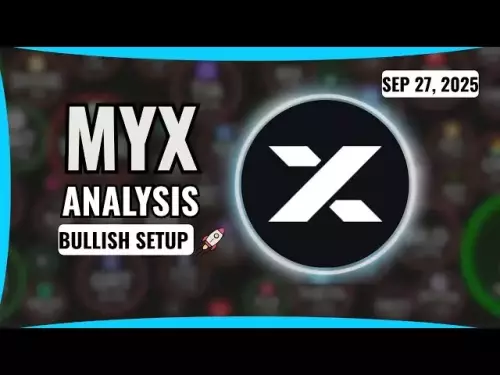-
 bitcoin
bitcoin $109523.663807 USD
-0.13% -
 ethereum
ethereum $4019.526508 USD
2.06% -
 tether
tether $1.000482 USD
0.00% -
 xrp
xrp $2.776815 USD
0.18% -
 bnb
bnb $958.942396 USD
0.12% -
 solana
solana $204.294698 USD
3.84% -
 usd-coin
usd-coin $0.999693 USD
0.00% -
 dogecoin
dogecoin $0.232115 USD
2.09% -
 tron
tron $0.338028 USD
0.84% -
 cardano
cardano $0.790920 USD
1.50% -
 hyperliquid
hyperliquid $44.871443 USD
5.60% -
 ethena-usde
ethena-usde $1.000322 USD
0.04% -
 chainlink
chainlink $21.034165 USD
2.60% -
 avalanche
avalanche $28.794831 USD
-0.54% -
 stellar
stellar $0.360466 USD
1.24%
Decoding of K-line volume and price characteristics before violent pull-up
K-line charts help traders predict violent pull-ups by analyzing volume, price patterns like bullish engulfing and hammer candles, and indicators such as RSI and MACD.
Jun 10, 2025 at 07:28 am

The study of K-line charts is a fundamental aspect of technical analysis in the cryptocurrency market. Understanding the volume and price characteristics before a violent pull-up can provide traders with valuable insights into potential market movements. In this article, we will delve into the key indicators and patterns that often precede a significant upward price movement, helping traders make more informed decisions.
Understanding K-line Basics
K-line charts, also known as candlestick charts, are a popular tool used by traders to analyze price movements over time. Each K-line represents a specific time period and displays the opening, closing, high, and low prices. The body of the K-line is colored differently to indicate whether the closing price was higher (usually green or white) or lower (usually red or black) than the opening price.
To effectively decode the volume and price characteristics before a violent pull-up, it's essential to understand the relationship between volume and price. Volume represents the number of units traded during a given period and can provide insights into the strength of a price movement. High volume often accompanies significant price changes, indicating strong market interest.
Identifying Pre-Pull-Up Patterns
Before a violent pull-up occurs, certain patterns and indicators can often be observed on the K-line chart. One of the most common patterns is the bullish engulfing pattern. This pattern occurs when a small bearish candle is followed by a larger bullish candle that completely engulfs the previous candle's body. The appearance of this pattern on high volume can signal a potential reversal and the start of a strong upward movement.
Another important pattern to watch for is the hammer candle. This pattern is characterized by a small body at the top of the candle and a long lower wick, indicating that sellers pushed the price down, but buyers were able to push it back up. When a hammer candle appears after a downtrend and is accompanied by high volume, it can be a strong signal of an impending pull-up.
Analyzing Volume Trends
Volume analysis is crucial when trying to predict a violent pull-up. Increasing volume as prices start to rise can indicate growing interest and buying pressure, which are often precursors to significant upward movements. Traders should look for a consistent increase in volume over several periods, as this can signal strong market participation and the potential for a sustained rally.
Additionally, volume spikes can be a key indicator. A sudden and significant increase in volume, especially when accompanied by a price increase, can signal that a large number of traders are entering the market and pushing the price up. These volume spikes can often precede violent pull-ups, as they indicate a rapid shift in market sentiment.
Key Indicators and Oscillators
Several technical indicators and oscillators can help traders identify potential pull-ups before they occur. The Relative Strength Index (RSI) is a momentum oscillator that measures the speed and change of price movements. An RSI reading below 30 indicates an oversold condition, which can signal that a price reversal and pull-up are imminent. Conversely, an RSI reading above 70 suggests an overbought condition, which may indicate that a pull-up is less likely.
The Moving Average Convergence Divergence (MACD) is another useful tool for predicting pull-ups. When the MACD line crosses above the signal line, it generates a bullish signal, suggesting that a pull-up may be on the horizon. Additionally, if the MACD histogram starts to increase in height, it can indicate growing bullish momentum, further supporting the possibility of a violent pull-up.
Combining Volume and Price Analysis
To increase the accuracy of predicting a violent pull-up, traders should combine volume and price analysis with the patterns and indicators discussed above. For instance, if a bullish engulfing pattern appears on high volume and the RSI is below 30, the likelihood of a significant upward movement increases. Similarly, if a hammer candle forms on increasing volume and the MACD line crosses above the signal line, it can be a strong indication that a pull-up is imminent.
Traders should also pay attention to the context of the market. If a cryptocurrency has been in a prolonged downtrend and suddenly shows signs of a reversal on high volume, it may be a prime candidate for a violent pull-up. Conversely, if the market is already in an uptrend, the potential for a significant pull-up may be lower, as the price may already be reflecting bullish sentiment.
Practical Application in Trading
To apply these concepts in real trading scenarios, traders can follow these steps:
- Monitor K-line charts: Regularly review the K-line charts of the cryptocurrencies you are interested in trading. Look for patterns such as bullish engulfing and hammer candles.
- Analyze volume: Pay close attention to volume trends and spikes. Increasing volume on price rises can indicate strong buying pressure.
- Use technical indicators: Incorporate indicators like RSI and MACD into your analysis. Look for oversold conditions and bullish crossovers.
- Combine signals: Look for confluence between different signals. For example, a bullish engulfing pattern on high volume with an RSI below 30 can be a strong indication of a potential pull-up.
- Consider market context: Always consider the broader market context. A reversal pattern on high volume after a downtrend is more likely to lead to a violent pull-up than the same pattern during an uptrend.
By following these steps and understanding the volume and price characteristics before a violent pull-up, traders can enhance their ability to identify potential trading opportunities and make more informed decisions.
Frequently Asked Questions
Q: How can I differentiate between a normal price increase and a violent pull-up?A: A violent pull-up is characterized by a rapid and significant price increase, often accompanied by high volume and strong bullish signals. Normal price increases tend to be more gradual and may not be supported by the same level of volume and technical indicators.
Q: Are there any specific time frames that are more conducive to identifying violent pull-ups?A: While violent pull-ups can occur on any time frame, they are often more visible on shorter time frames such as 1-hour or 4-hour charts. These time frames can provide more detailed insights into volume and price movements, helping traders identify potential pull-ups more quickly.
Q: Can false signals occur when using these methods to predict violent pull-ups?A: Yes, false signals can occur, and no method is foolproof. It's important to use multiple indicators and patterns to confirm signals and to always consider the broader market context. Additionally, risk management strategies, such as setting stop-loss orders, can help mitigate the impact of false signals.
Q: How can I improve my skills in reading K-line charts and volume analysis?A: Improving your skills in reading K-line charts and volume analysis requires practice and continuous learning. Start by studying historical charts and identifying patterns and volume trends. Use demo accounts to practice trading based on these analyses. Additionally, reading books and articles on technical analysis, attending webinars, and joining trading communities can provide valuable insights and feedback.
Disclaimer:info@kdj.com
The information provided is not trading advice. kdj.com does not assume any responsibility for any investments made based on the information provided in this article. Cryptocurrencies are highly volatile and it is highly recommended that you invest with caution after thorough research!
If you believe that the content used on this website infringes your copyright, please contact us immediately (info@kdj.com) and we will delete it promptly.
- XRP Tundra: Dual-Token Innovation in the XRP Ecosystem
- 2025-09-27 20:25:12
- MUTM: Is This Crypto the Smartest Buy Now?
- 2025-09-27 20:25:12
- Crypto Millionaires: Unlocking Financial Freedom with the Right Investments
- 2025-09-27 20:30:01
- ETH Price Check: Crypto Analysts Favor These Moves Now
- 2025-09-27 20:30:01
- BlockchainFX, Bitcoin Hyper, and Crypto Presales: Finding the Next Big Thing
- 2025-09-27 20:30:01
- Galaxy CEO, Bitcoin, and the Powell Replacement: A $200K Prediction?
- 2025-09-27 20:30:15
Related knowledge

Practical parameter settings for a Bitcoin multi-timeframe moving average system
Sep 18,2025 at 10:54pm
Optimizing Timeframe Combinations for Bitcoin Trading1. Selecting appropriate timeframes is crucial when building a multi-timeframe moving average sys...

How can I filter out false breakouts in Dogecoin high-frequency trading?
Sep 22,2025 at 01:00am
Understanding False Breakouts in Dogecoin Trading1. A false breakout occurs when Dogecoin's price appears to move beyond a defined support or resistan...

Techniques for identifying tops and bottoms in the Bitcoin on-chain NVT model
Sep 20,2025 at 07:54pm
Understanding the NVT Model in Bitcoin Analysis1. The Network Value to Transactions (NVT) ratio is often described as the 'P/E ratio' of the cryptocur...

What does the surge in open interest in Bitcoincoin futures mean?
Sep 20,2025 at 11:18pm
Understanding the Surge in Dogecoin Futures Open Interest1. A surge in open interest within Dogecoin futures indicates a growing number of active cont...

How can I use the Ethereum USDT premium to gauge market sentiment?
Sep 18,2025 at 11:55pm
Understanding the Ethereum USDT Premium1. The Ethereum USDT premium refers to the price difference between USDT (Tether) traded on Ethereum-based plat...

What should I do if Ethereum staking yields decline?
Sep 20,2025 at 06:18am
Understanding the Causes Behind Declining Ethereum Staking Yields1. The Ethereum network transitioned to a proof-of-stake consensus mechanism with the...

Practical parameter settings for a Bitcoin multi-timeframe moving average system
Sep 18,2025 at 10:54pm
Optimizing Timeframe Combinations for Bitcoin Trading1. Selecting appropriate timeframes is crucial when building a multi-timeframe moving average sys...

How can I filter out false breakouts in Dogecoin high-frequency trading?
Sep 22,2025 at 01:00am
Understanding False Breakouts in Dogecoin Trading1. A false breakout occurs when Dogecoin's price appears to move beyond a defined support or resistan...

Techniques for identifying tops and bottoms in the Bitcoin on-chain NVT model
Sep 20,2025 at 07:54pm
Understanding the NVT Model in Bitcoin Analysis1. The Network Value to Transactions (NVT) ratio is often described as the 'P/E ratio' of the cryptocur...

What does the surge in open interest in Bitcoincoin futures mean?
Sep 20,2025 at 11:18pm
Understanding the Surge in Dogecoin Futures Open Interest1. A surge in open interest within Dogecoin futures indicates a growing number of active cont...

How can I use the Ethereum USDT premium to gauge market sentiment?
Sep 18,2025 at 11:55pm
Understanding the Ethereum USDT Premium1. The Ethereum USDT premium refers to the price difference between USDT (Tether) traded on Ethereum-based plat...

What should I do if Ethereum staking yields decline?
Sep 20,2025 at 06:18am
Understanding the Causes Behind Declining Ethereum Staking Yields1. The Ethereum network transitioned to a proof-of-stake consensus mechanism with the...
See all articles









































































